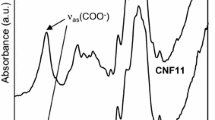Abstract
Natural cellulose fibres comprise several non-cellulose compounds and cationic trash which cause problems during different adsorption processes such as dying, printing, final fiber finishing and coating. Therefore the pre-treatment (classical NaOH or environmental friendly enzymatic treatment, demineralisation) is the most important step in cellulose textile prefinishing-cleaning. An appropriate way to describe the success of different processes in fiber pre-treatment which result in distinct surface charge is the determination of electrokinetic properties-zetapotential (ZP) of fibers and textile materials. The zetapotential was determined by streaming potential measurements as a function of the pH and the surfactant concentration in the liquid phase.
Cellulose fibers in an aqueous medium are negatively charged due to their characteristic carbonyl and hydroxyl groups. The degradation and removal of specific hydrophobic non-cellulose compounds which cover the primary wall of the cellulose polymer change the surface charge.
The ZP is mainly influenced by waxes, their removal decreases the negative ZP. This result is obtained by the classical chemical process as well as by an environmentally friendly enzymatic treatment.
Our results indicate that the progress of textile treatment and purification is reflected by the zetapotential of the fabrics. This method enables the estimation of the process'es progress and the interaction between components of the liquid phase and the fibre surface.
Similar content being viewed by others
References
Rath H (1972) In: Lehrbuch der Textil chemie. Springer-Verlag, Berlin, pp 50–55
Herrington TM, Petzold JC (1992) Colloids and Surfaces 64:97–108
Herrington TM, Petzold JC (1992) Colloids and Surfaces 64:109–118
Honeyman J (1959) In: Recent Advances in the Chemistry of Cellulose and Starch. Heywood Company Ltd, London, pp 265–267
Lewin M, Sello SB (1984) In: Chemical Processing of Fibers and Fabrics, Fundamentals and Preparation. Marcel Dekker, Inc, New York, Basel, pp 195–207
Rösch (1988) In: The practice of cotton fabric preparation, Reprint from Textil praxis international 44:4–8
Werner C, Jacobasch HJ (1995) J Biomater Sci Polymer Edn, 7:61–75
Espinosa-Jimenez, Gonzales Caballero F (1991) Cellulose Chem Technol 65–77
Ribitsch V, Jorde Ch, Schurz J, Jacobasch HJ (1988) Prog Colloid & Polymer Sci 77:49–54
Ribitsch V, Jacobasch HJ, Boerner M (1991) In: Advances in Measurement and Control of Colloidal Processes. Butterworth-Heinemann, pp 354–365
Fairbrother F, Mastin H (1924) J Chem Soc 75:2318–2323
Jacobasch HJ, Grosse I (1987) Textiltechnik 37:266–267
Stana K, Pohar C, Ribitsch V (1995) Colloid Polym Sci (in press)
Author information
Authors and Affiliations
Rights and permissions
About this article
Cite this article
Ribitsch, V., Stana-Kleinschek, K. & Jeler, S. The influence of classical and enzymatic treatment on the surface charge of cellulose fibres. Colloid Polym Sci 274, 388–394 (1996). https://doi.org/10.1007/BF00654060
Received:
Accepted:
Issue Date:
DOI: https://doi.org/10.1007/BF00654060




